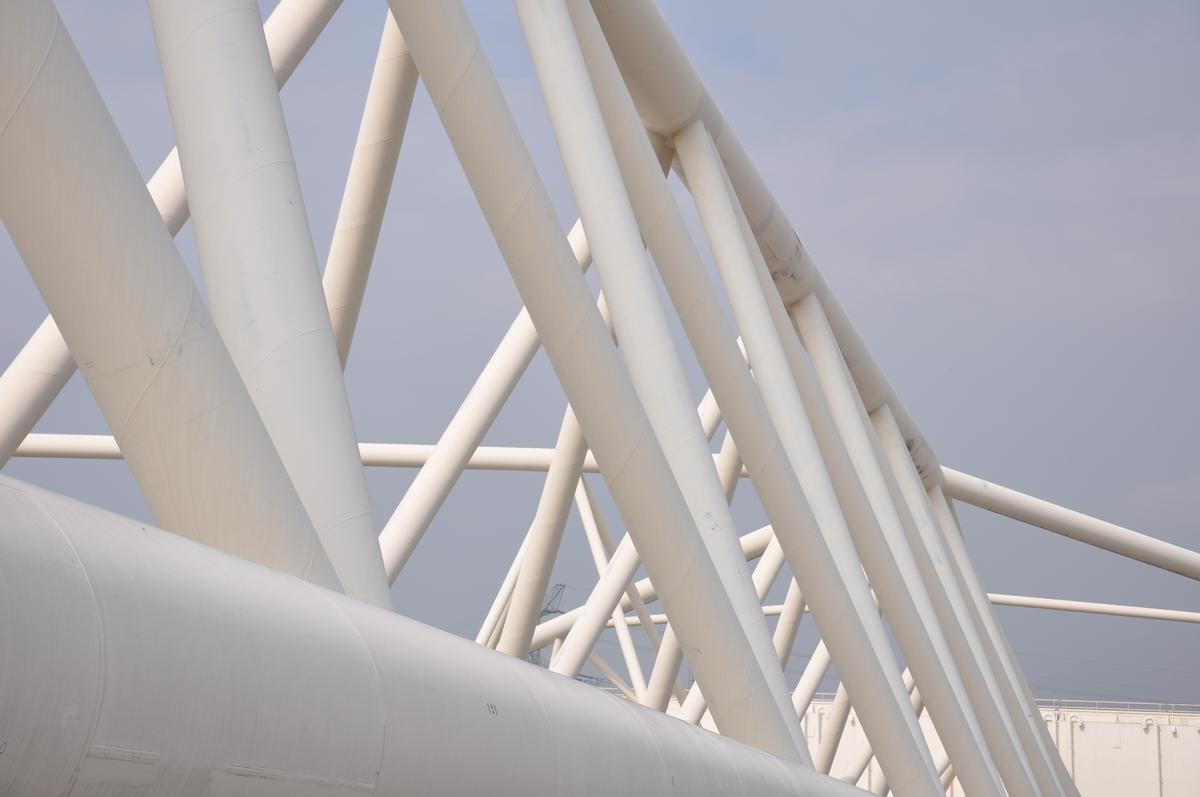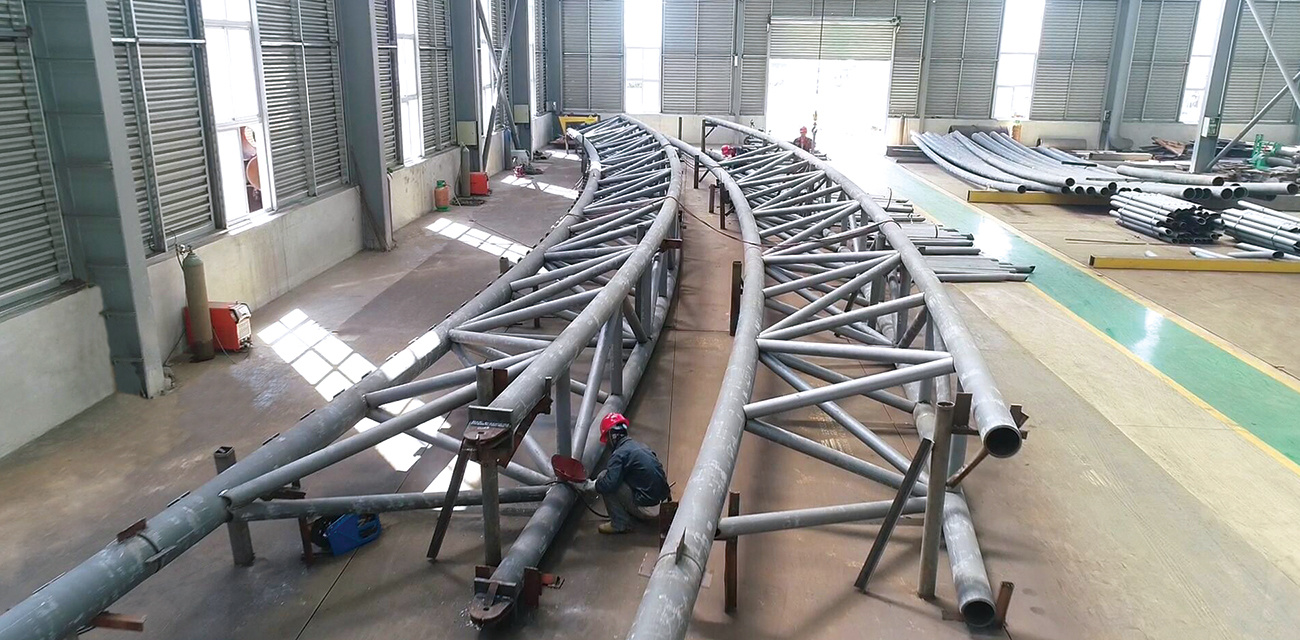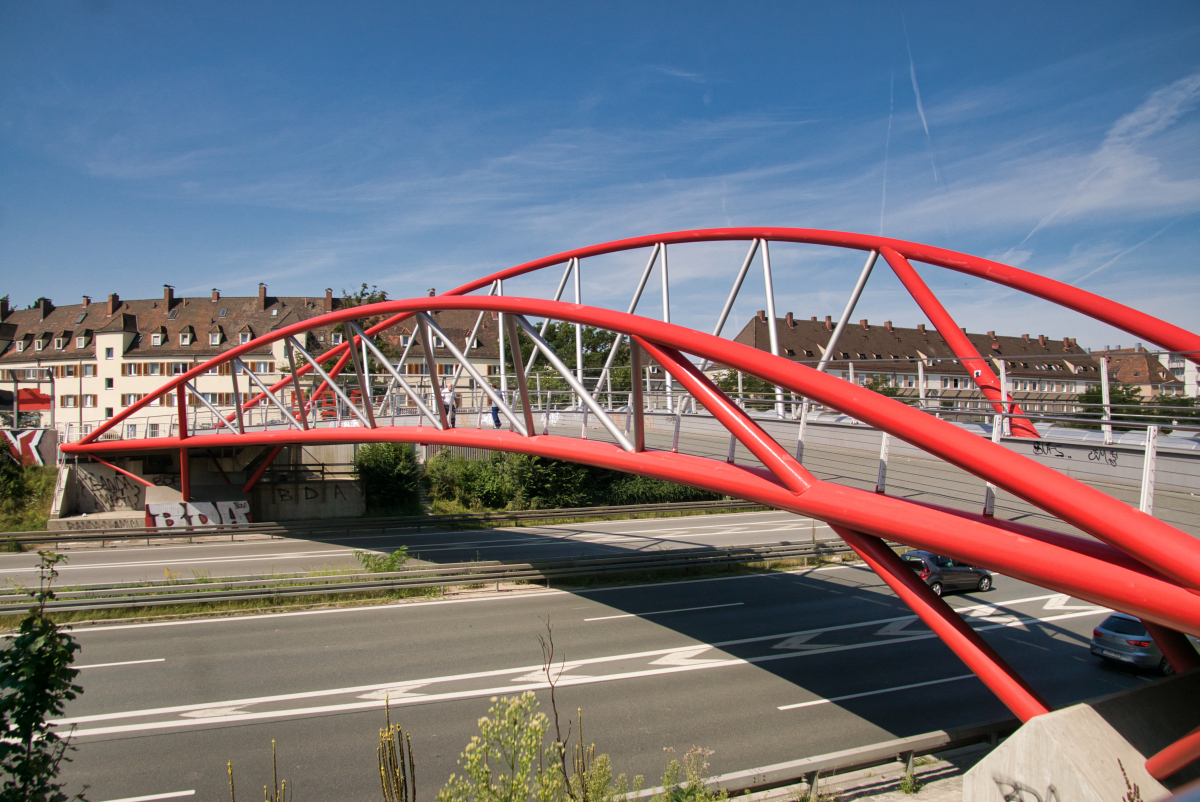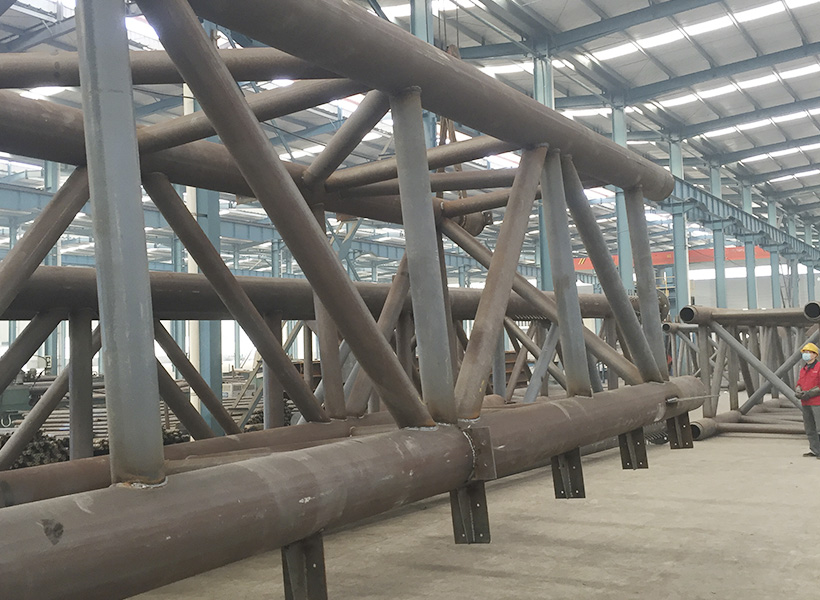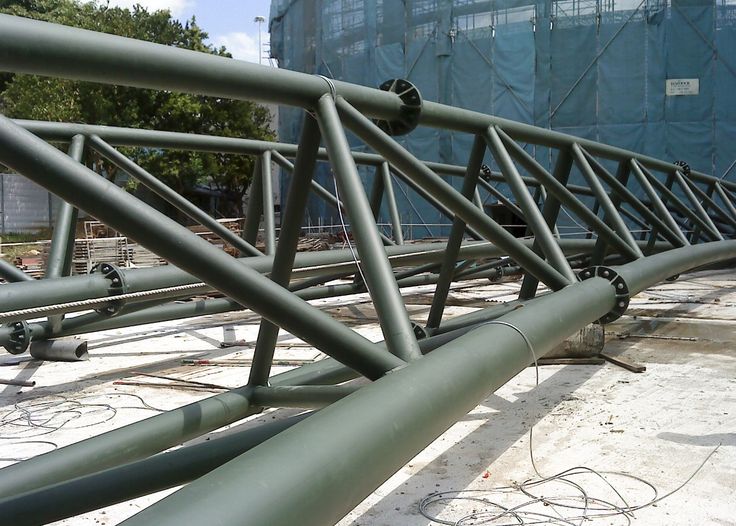The Pipe Bending Process
The seasoned professionals at Abter Steel set the standard for Pipe bending with the following three processes:
Rotary Draw Bending
Rotary Draw Bending is used to form single, multiple, or compound bends. This process employs a mandrel to provide internal support throughout the bend. The mandrel fits within the Pipe’s inner diameter with precise clearance. Pressure applied from within balances the outside forces, allowing for the formation of thinner-walled material. With the aid of a wiper die, this method produces a round, wrinkle-free bend while maintaining a minimum wall thickness on the back of the bend. The maximum degree of the bend is typically 180° or less with standard tooling. This technique is used in all of our bending departments, including CNC bending.
Compression Bending
Compression Bending is effective for straightening or single bend applications. In this method, the workpiece is clamped or held steady, and force is applied directly to create the bend. This results in oval cross-sections and is generally limited to thin-walled or larger bend radii. Typically, the bend is performed without internal support, which can result in crushed bends. The maximum degree of the bend is generally less than 120°, though a 180° bend may be required for Serpentine Bends. This technique is used in the Small Bending Department and the Special Projects Cell.
Roll Bending
Roll Bending is used for large radius bending. The Pipe is pushed through a set of three rollers to form a large arc. This setup is not practical for small radius bends and may require multiple passes to achieve the desired dimensional tolerance. The resulting form has an unmarked interior, as no mandrel is applied in the process. The maximum degree of the bend is 360°. This technique is used in the Small Bending Department.
Suitable Materials for Pipe Bending
Various materials respond differently to bending, even when technicians use the same equipment and methodology. Because the process stretches materials to some degree, flexible metals usually work best. Abter Steel can bend the following types of metal tubing:
- Alloy 40 (21Cr-6Ni-9Mn Stainless Steel): Ideal for pipes in energy applications due to its high-temperature tolerance.
- Aluminum: Lightweight (1/3 the weight of steel) and ideal for aerospace applications. Aluminum is a good conductor and dissipates heat well, with specific properties varying across its seven series:
- Series 1xxx: Corrosion-resistant and easy to fabricate.
- Series 2xxx: High machinability at elevated temperatures but low resistance to corrosion.
- Series 3xxx: Usually used in bending, with good corrosion resistance and machinability.
- Series 4xxx: Low melting point, primarily for welding.
- Series 5xxx: High strength, corrosion resistance, formability, and weldability.
- Series 6xxx: High strength, corrosion resistance, formability, and weldability, and able to be heat treated.
- Series 7xxx: High strength, hard to bend.
- Brass: Malleable, hard, and ideal for rolling, drawing, and bending projects.
- Copper: Easily formed, ductile, corrosion-resistant, and malleable. It’s one of the best conductors of electricity.
- Copper-Nickel: Adding nickel to copper improves strength and resistance to oxidation and corrosion. A 70/30 alloy is ideal for marine applications.
- Hastelloy: A nickel- and cobalt-based alloy, resistant to corrosion and easy to weld.
- Inconel: A superalloy designed for extreme temperatures, resistant to corrosion due to its nickel- and chromium-based composition.
- Stainless Steel: Versatile, used in interior and exterior applications, and water- and corrosion-resistant.
- Steel: Carbon steels, which are predominantly iron and carbon, vary in hardness, strength, ductility, and ease of bending based on carbon content:
- Low Carbon Steel: ≤ 0.3% carbon
- Medium Carbon Steel: 0.3 – 0.6% carbon
- High Carbon Steel: ≥ 0.6% carbon
- Titanium: High strength-to-density ratio, corrosion-resistant, and has a useful life span of 20-40 years, often used in naval and aerospace applications.
Finishing Options for Pipe Bending
After a Pipe has been shaped, the next step is to finish the ends to ensure the part fits securely into the designed system.
Abter Steel offers the following finishing services to ensure flawless integration:
- Flaring
- Flattening
- Expanding
- Swaging
- Beading
- Trimming
- Facing
- Victaulic Grooving

